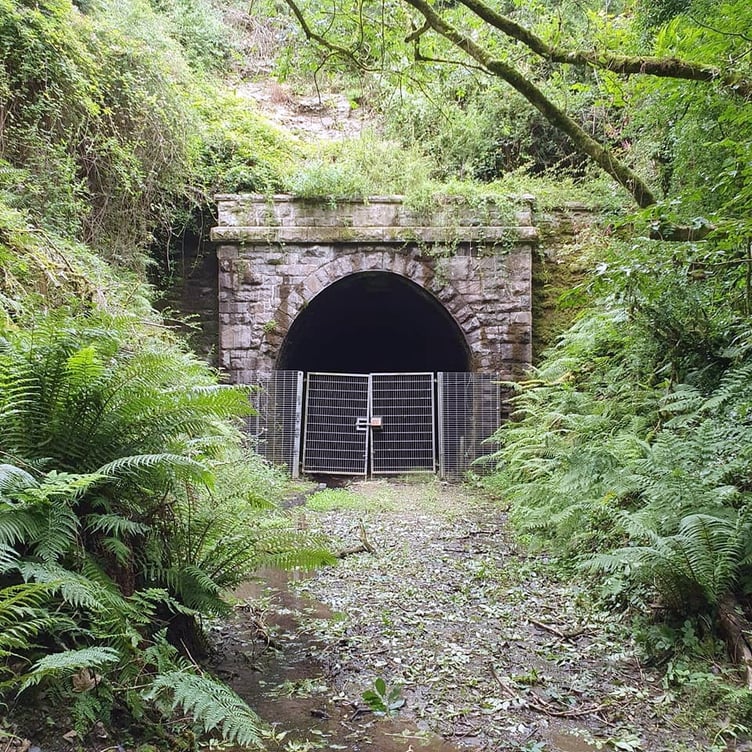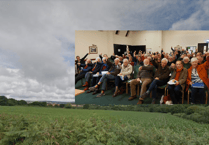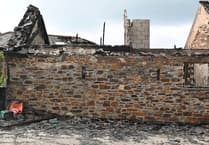THE DESTRUCTION of the railway lines in the 1960’s saw a major legacy of the Victorian Industrial era mostly consigned to history in the name of rationalisation and modernity.
While it is true that some railway stations survived to become privately owned properties, it was also the case that alongside the dismantling of miles upon miles of track that had once traversed the Cornish landscape, connecting towns with hamlets, villages and fields, a good quantity of now-unwanted structures fell afoul of the wrecking ball.
Alongside the repurposed and the demolished, were a number of structures simply left behind and forgotten about.
Bridges that once carried the mode of transport that would usurp the railways in the brave new world; vehicles, now remained in place but with nothing below to carry them over.
Near to the village of St Kew Highway and the adjacent hamlet of Trelill, are two railway structures which, it could be argued that time simply forgot. Their continued existence serves no purpose other than to remind the interested of the life they once served, and while hopes remain extant in the eyes of some for the return of the railways they remembered, the well-built, Victorian structures remain there in perpetuity.
At St Kew Highway, there is a bridge that seemingly goes to nowhere, although, of course, prior to its closure in 1966, it once formed a vital part of the North Cornwall line, linking Wadebridge and Padstow with Launceston and onwards to Halwill and Okehampton.
For many years, the road we all know as the A39 passed under the bridge, but this caused a problem for high-sided lorries and a solution was needed to not only alleviate that particular problem, but also to reconfigure the road in order to widen it.
While it is possible that in any other solution, there was a good chance the railway bridge that had seemingly served its purpose would simply be demolished, the solution lay in severing the route it once served, with the newly built A39 bypassing the bridge by going through the embankment that would have carried the line towards the bridge with the former road alignment remaining as a layby and resting place.
One of the curious oddities of the station at St Kew Highway, was that like Camelford and Otterham, to name two of a few, the actual railway station itself was a distance away from the conurbations it was built to serve. In this instance, it was primarily aimed at the nearby village of St Kew with a wider catchment area comprising of the villages of St Tudy and St Breward.
As it happened, the newly built station was approximately two miles away ‘as the crow flies’ from St Kew, and like at Camelford and Otterham stations, a new community was built near to the railway station, which now survives in private residence.
Near to the bridge to nowhere at St Kew Highway, is a tunnel that time forgot, in the hamlet of Trelill. As well as being the only tunnel remaining on the North Cornwall Line, it was also the only tunnel ever built.
Like with the rest of the line, the service of the tunnel, which allowed the railway to cross under the North Cornwall countryside came to an end when the line was closed in 1966 and subsequently dismantled. However, unlike many other tunnels that also fell foul of the Beeching axe, Trelill’s tunnel wasn’t in-filled or demolished, but merely abandoned.
Construction of the Trelill tunnel commenced in 1893, and by the turn of the year, in January 1894, over 100 yards had been tunnelled into the hill before the breakthrough came half a year later in June 1894. Two months later, in August of 1894, one third of the 333-yard tunnel had been opened out to the full size.
While the bridge was a single-bore tunnel, meaning that it could only accommodate a single track through its curved and falling gradient, part of the agreement which permitted its construction meant that in the event that demand for the line necessitated expansion, it could be reconstructed to allow an additional line.
During World War II, like much of the country’s infrastructure, military personnel from the Home Guard were stationed at the tunnel in order to protect it from potential invaders, although the only military activity of note in the rural area were the landing of German bombs in a nearby field.
Just over 20 years after being guarded from destruction, the line itself would see its own death-knell at the axe of British Railways and the Dr Beeching recommendations as opposed to Hitler’s advancing armies and on October 3, 1966, the line through the tunnel closed.
Since then, the line has remained buried in the countryside, a curious oddity to those who seek it. It can still be traversed, as the pictures shown courtesy of Nick Hairs show, however in the years since its abandonment, a landslip at the northern portal partly blocked the tunnel while inside is wet in places due to two drains introducing water at the north end, too.
St Kew Highway and Trelill tunnel are two of the pieces of architecture the railways left behind. Now a mere curiosity to passers by or those who seek the trail their ancestors would have commuted to, these old structures serve as a reminder of what was lost in October 1966, while standing as a tribute to the engineering of the Victorians that built the line; for there is no greater testament that despite laying abandoned for 57 years, these are structures which still stand despite the world around them changing in the name of evolution and ‘progress’.





Comments
This article has no comments yet. Be the first to leave a comment.